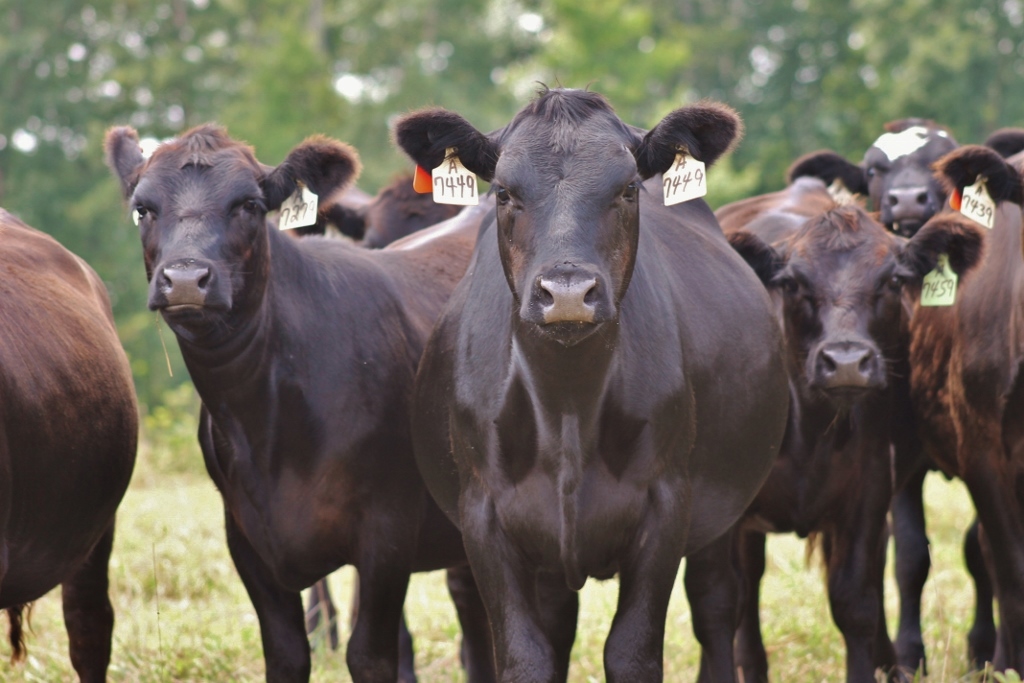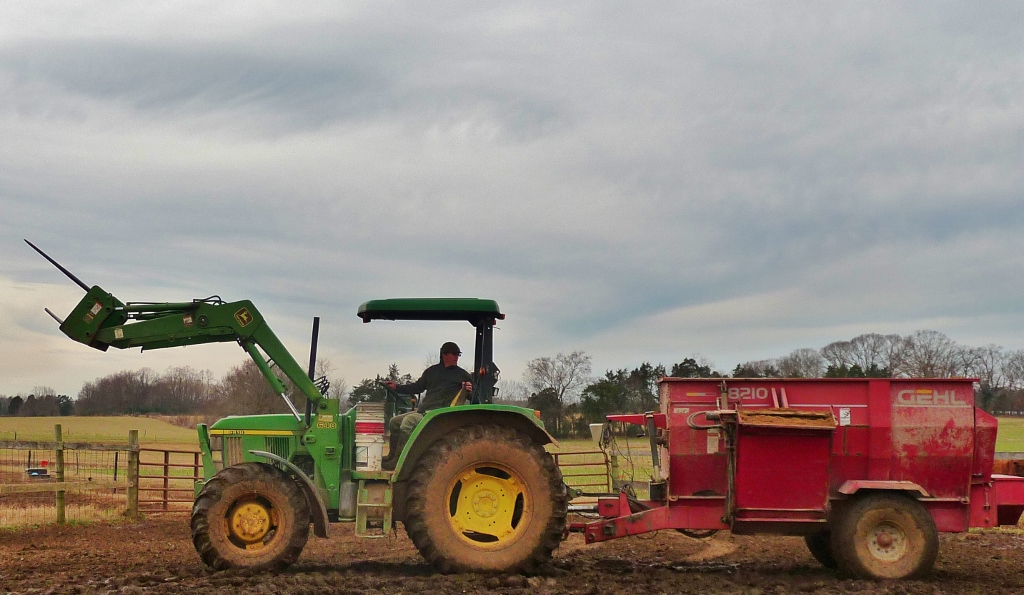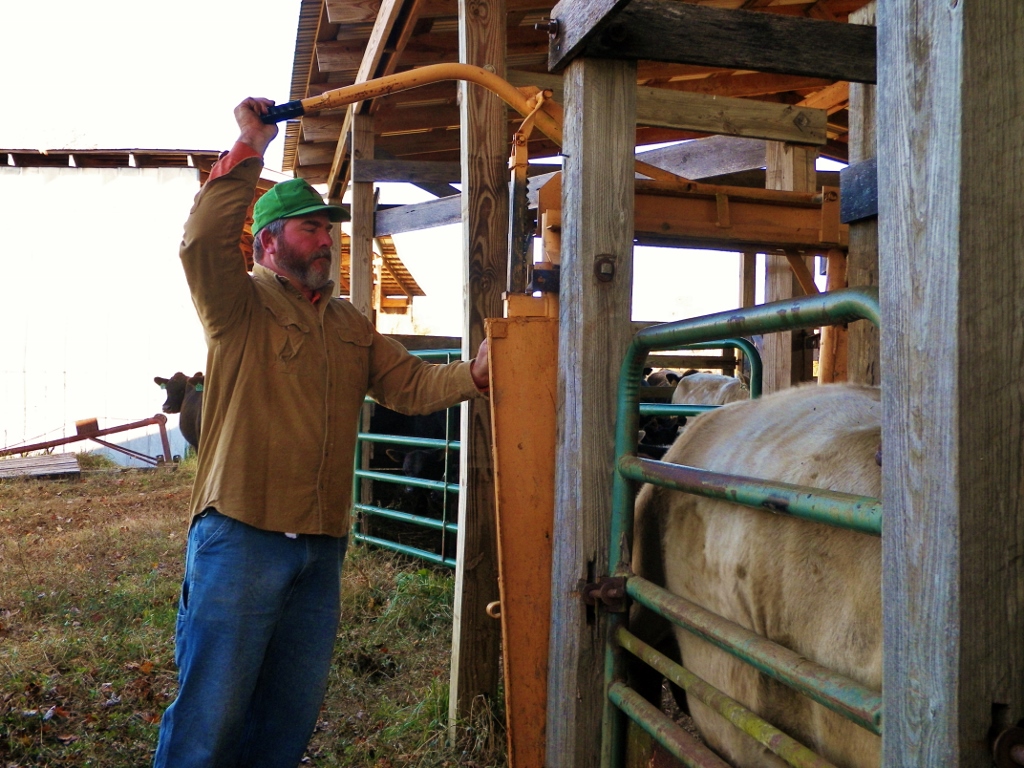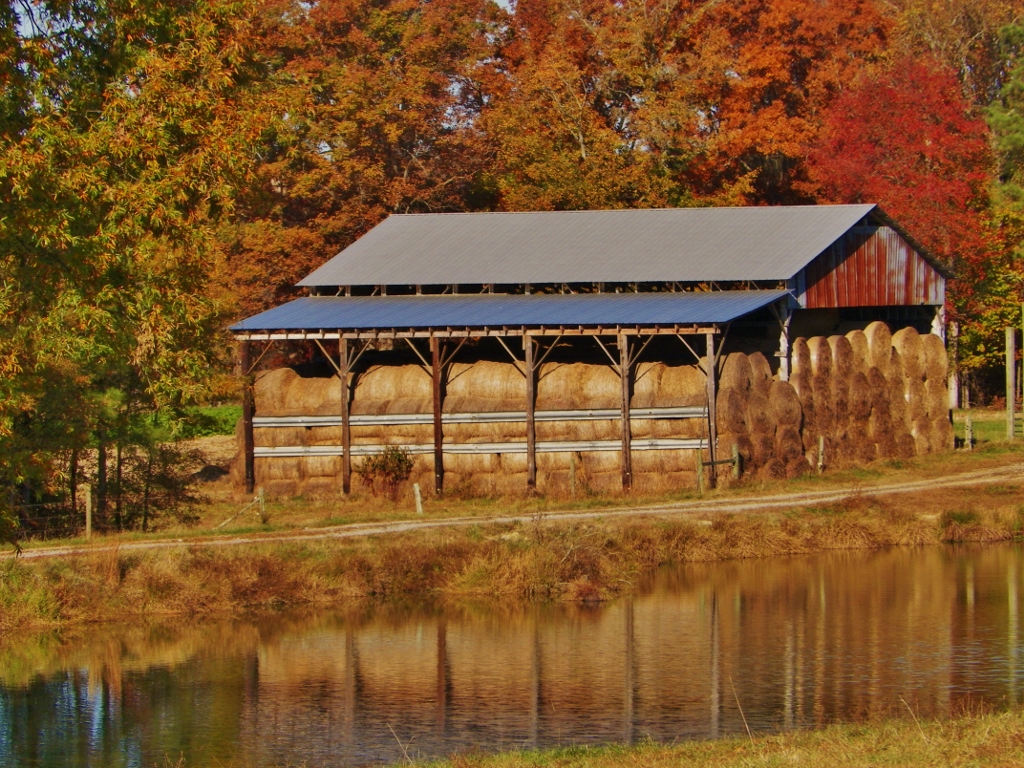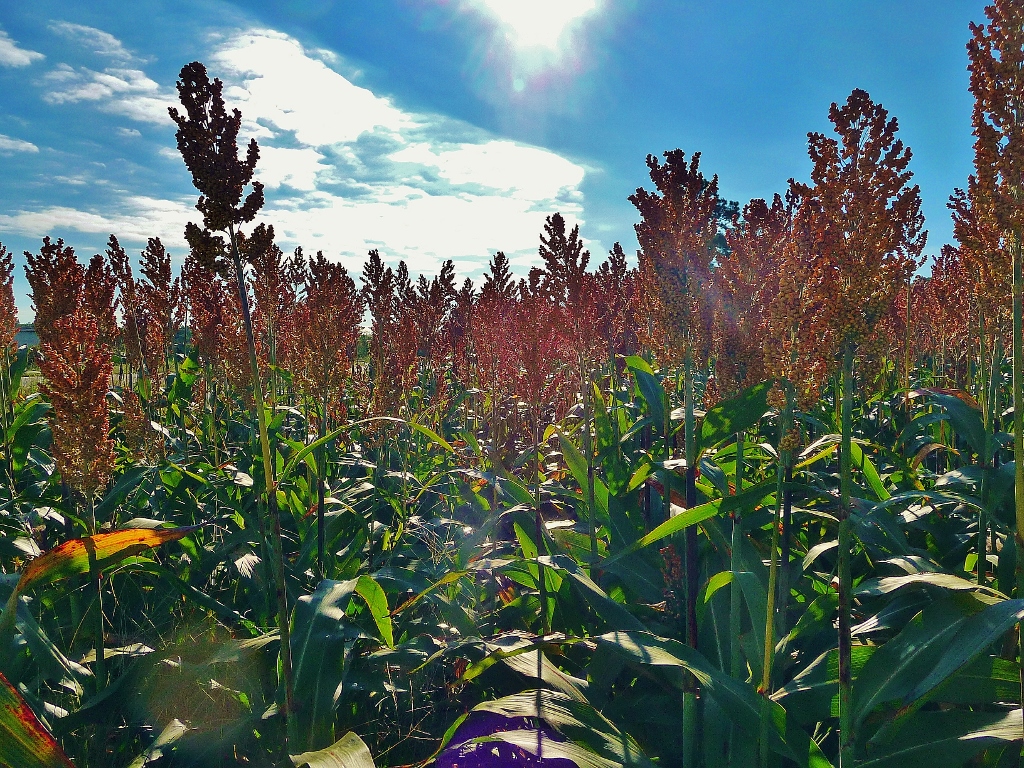More commonly abbreviated as “SPAREC” by those familiar with it, this center is one of Virginia Tech’s eleven experiment stations, or “ARECs,” scattered across the state. The stations were each established to perform research and outreach matching the needs of local agricultural industries.

Sorghum and sorghum-sudangrass hybrids are grown at the station for the livestock forage research program.
For the Southern Piedmont region of Virginia, tobacco remains a key agricultural product with deep historical significance, and forage production is a critical factor keeping cattle, goat, sheep, and horse operations in the area profitable. To serve the farmers growing these products, SPAREC, located in Blackstone in Nottoway County, provides support and cutting-edge information to farm producers. The station has also performed work in small fruit, field crop, and specialty crop production.
While many people in the eastern, central, and northern part of Virginia have never seen tobacco and the number of tobacco farms in the state has dwindled, it remains the 10th ranking agricultural commodity produced in the state just behind wheat, generating $109,000,000 in receipts annually. Much of the tobacco research at SPAREC centers on improving crop management, testing new materials and practices in the greenhouse and the field, and evaluating new varieties. However, the tobacco projects honing in on plant pathology, nematode management, plant breeding, conservation tillage, energy efficiency, and precision application technology have broad implications for other agricultural industries.
Dr. Charles Johnson, Dr. David Reed, and Dr. Carol Wilkinson each work in one of the unique tobacco research areas at SPAREC. For most of the trials performed at the station, tobacco plants are started in float trays in greenhouses and transplanted to test plots in the spring. The stage after transplanting is called “lay-by,” followed later by flowering when the plants grow tall. Tobacco plants produce pink flowers, but these are “topped,” or removed, so that the plant utilizes its resources on vegetative production. During ripening later in the summer, lower leaves of “flue-cured” tobacco varieties are harvested first, followed later by upper leaves. The leaves are packed in a curing barn and dried by circulating air. “Burley” and “dark-fired” tobacco varieties are harvested all at once; the stalk is cut at ground level, speared on a stick, and hung in a barn. Most Virginia tobacco grows in the counties along the south of the state, where soil characteristics, industry infrastructure, and growing conditions favor production.
Tobacco remains a primary crop at SPAREC, but forage research is an equally critical program at the station thanks to increased interest from farmers who want to mitigate high livestock production costs by improving forage quality and grazing efficiency. Dr. Chis Teutsch has spent years running trials, compiling variety data, creating forage publications, and speaking at Extension and industry events throughout his years working with legumes, Bermuda grass, crab grass, cool-season grasses, and warm-season annuals like brown mid-rid forage sorghums and sorghum-sudangrass hybrids.
To enhance the depth and breadth of the forage program, SPAREC saw the recent addition of a cattle-handling facility and installation of fencing and water troughs on new pasture ground. With the addition of Ruminant Livestock Specialist Dr. Brian Campbell in 2012, the station brought cattle onto the premises for forage utilization studies, grazing schools, demonstrations, cattle management workshops, and research. In fact, since outreach is an important part of the Extension forage work done at SPAREC, producers have numerous opportunities to come visit the station’s cattle facilities and forage plots including a field day each year in July and the many workshops held at the station throughout the year.
Outreach does not stop with forages. The tobacco specialists also organize a widely-attended annual field day in July and several production meetings for farmers in the winter. Thanks to its central location providing easy access for farmers in several surrounding counties, the station frequently hosts workshops put on by nearby county Extension agents covering topics from beef production to greenhouse management to grain crops.
Youth agricultural education has become a priority in recent years. Visitors to the annual SPAREC Family and Farm Day witness the station’s commitment to this task and long-standing partnerships with community organizations and agencies. The end result is dozens of hands-on activity stations for the hundreds of children and adults who attend the event to learn about agriculture. This year’s Family and Farm Day, set for September 13 from 9-2, will teach visiting children about soil health, conservation, farm life, livestock, vegetables, crops, insects, wildlife, safety, and farm equipment. SPAREC also hosts Ag Days for 3rd and 5th grade classes for two weeks each April. The Ag Day programs draw buses of students from public and private schools in each county surrounding the station. They continue to grow in attendance each year thanks to the real-life application and reinforcement of classroom lessons and standards of learning they offer.
Since its formal establishment in 1972, the Southern Piedmont Agricultural Research and Extension Center has been a force for changing, improving, and modernizing agriculture. The end result is a stronger local agricultural economy built by individuals empowered by the knowledge they have gained from the station’s research and outreach.
Additional Resources for Readers:
Southern Piedmont AREC website
Information about Virginia Tech’s ARECs across the state
Tobacco research, publications, and resources
Forage research, publications, and resources: here and here
Beef cattle publications and resources
Early colonial history of Virginia tobacco from the National Park Service

